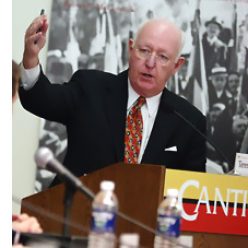MONDAY MORNING MEDIA IX
On the dry, hot morning of June 7, 1967, as a newly-minted foreign correspondent for The New York Times in Jerusalem, I was among the first American reporters to follow Israeli troops into East Jerusalem. I rode in a borrowed jeep into the Sheik Jarrah neighborhood and watched as Israeli troops rounded up all the Arab men of military age and took them prisoner. An hour later, I ditched the jeep and walked through the Lion’s Gate into the Old City and onto the broad, open plaza around the Dome of the Rock and Al Aksa mosque. The area is known as the Temple Mount to Jews and the Noble Sanctuary to Arabs.
Sheik Jarrah and Al Aksa were the two incendiary matches that lit the fuse that launched the most recent, 11-day war between Israel and Hamas in Gaza: Sheikh Jarrah because of an ongoing legal dispute between Palestinian residents and Israelis over the ownership of several of the houses; the area around the Al Aksa because Israeli police launched a violent crackdown on Palestinian protesters that brought Hamas rockets raining into Israel.
A ceasefire between the two sides has largely held for several days now after heavy casualties and destruction on both sides. There is speculation that Israel’s politically embattled and indicted Prime Minister, Bibi Netanyahu, might have brought on the fighting as a diversion from his own problems; and that Hamas may have responded as forcefully as it did to establish itself as the defender of Jerusalem over Fatah and the Palestinian Authority and the true leader of the Palestinian people. So far, neither accusation has been proved by documentary evidence, but the speculation abounds.
In many ways, this latest, costly battle seems reminiscent of past encounters between Israel and Hamas. Innocent civilians get caught in the deadly crossfire on both sides. Foreign powers, including the United States and Egypt, apply pressure and a ceasefire is reached. Each side buries its dead and rebuilds. The tension subsides but the anger remains. Rinse and repeat.
But this latest round is significantly different in several ways. Social media played an explosive role this time in arousing anger and action on both sides. Right-wing Israelis fought openly against Israeli-Palestinian demonstrators in the streets of Lod and Acre and Haifa and other mixed cities, shattering an uneasy accommodation that has existed within Israel for decades. And world opinion was more vocal in criticism of Israel and support for Palestinians. None of these realities is likely to disappear any time soon. So, the stage is set for more social media incitement on both sides and more internal, communal strife within Israel.
To anyone who remembers the hopes for peace that were felt on both sides in the aftermath of the Six Day War in 1967, it is a discouraging, heartbreaking prospect. To understand what Palestinians go through on a daily basis on the West Bank these days, read the excellent piece in the Sunday, May 23, New York Times by David M. Halbfinger and Adam Rascon headlined: “The Misery of Life Under Occupation: Daily Indignities Mount for Palestinians, Steadily fueling a conflict.” That says it all.
